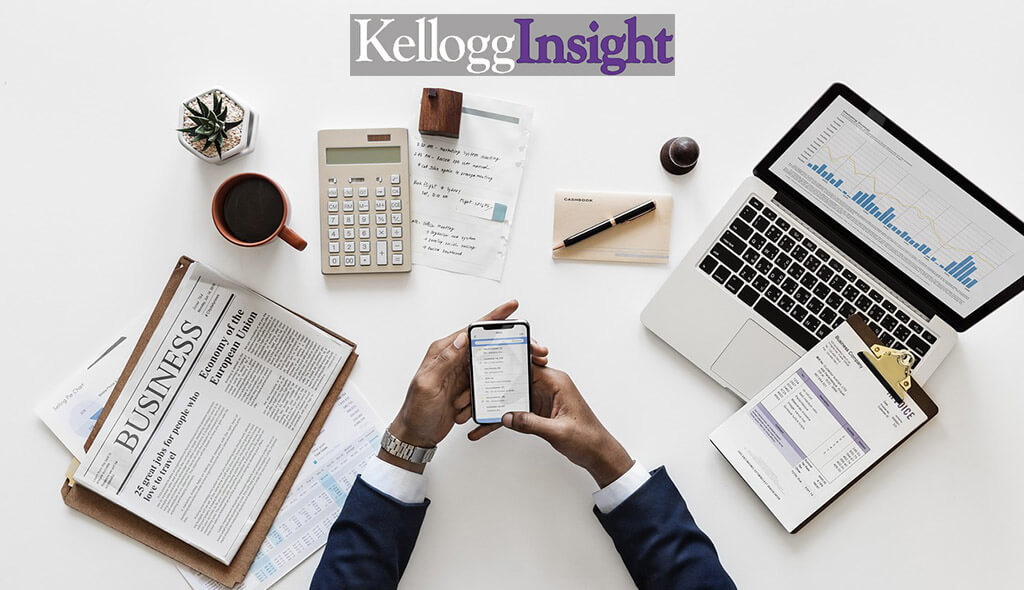In this collection of articles, members of the Kellogg School of Management faculty discuss various aspects of investing. Read on – because an informed investor is a good investor…
 EVER wondered whether your favourite investment tool actually works? Or what research has to say about the benefits of benignly neglecting your portfolio? Or why investors are looking closely at companies’ track records for sustainability?
EVER wondered whether your favourite investment tool actually works? Or what research has to say about the benefits of benignly neglecting your portfolio? Or why investors are looking closely at companies’ track records for sustainability?
- Your investment tool is failing you
The Capital Asset Pricing Model (CAPM) is the most commonly used tool for predicting stock returns for individual firms. Unfortunately, it doesn’t work, says Kellogg assistant professor of accounting information and management Matthew Lyle. Fortunately, he and his co-author have come up with one that does.
The CAPM model focuses on how sensitive a stock price is to the broader market. “The biggest insight CAPM delivers is that the more exposure a stock has to market-wide upturns and downturns – the greater the risk – the higher the expected stock return will be,” Lyle explains. However, after testing CAPM against data from the 1970s to 2013, the researchers found no evidence of its predictive powers.
The model they came up with uses accounting fundamentals instead: namely, a firm’s stock returns, its book-to-market ratio, and its return on equity. The researchers tested their model using the same data against which they had tested the CAPM model. They found that their new model – which they say is relatively easy for any investor to adopt – could robustly forecast stock returns up to three years into the future.
- Learn from one of the “investment greats”
Called one of the investment greats by Warren Buffett, Louis Simpson is former chief investment officer for Geico and current chairman of SQ Advisors and a senior fellow and adjunct professor of finance at Kellogg.
“You can only know so many companies,” says Simpson. “If you’re managing 50 or 100 positions, the chances that you can add value are much, much lower.
“So far this year, we bought one new position, and we’re looking pretty seriously at one more. I don’t know what we’ll decide to do. Our turnover is 15, 20 percent. Usually we add one or two things and get rid of one or two things.
“Warren [Buffett] used to say you should think of investing as somebody giving you a fare card with 20 punches. Each time you make a change, punch a hole in the card. Once you have made your twentieth change, you have to stick with what you own.”
- Don’t look now
Why put off till tomorrow what you can do today? Because, according to Kellogg finance professor Janice Eberly, you may get a better return on your investments that way.
Eberly and her colleagues have conducted research suggesting that investors who closely monitor their portfolios may be shooting themselves in the foot. That’s because the more you monitor your portfolio, the more likely you are to make changes to it – and, of course, there are costs associated with those changes.
So how often should investors should check their portfolios? Even when costs represent only 0.01 percent of total wealth, the optimal inattention time is nearly eight months. As costs go up, that optimal inattention period does also.
Optimal inattention time is also affected by the rate of return on investment. For example, because less aggressive portfolios will grow more slowly, they need to be optimised less often—whereas riskier portfolios with higher rates of return should be adjusted at more frequent intervals.
“I think of it as the optimality of procrastination,” Eberly says of her findings. “Sometimes nothing is actually the optimal thing to do.”
- Learn more about investing in green companies
It’s not lucrative being green. At least, that is the perception of many investors, who cite lower share prices as a reason to avoid sinking money into environmentally sustainable companies. But are those investors correct in assuming that green firms perform poorly compared to others?
No, argues research from Kellogg finance professor Ravi Jagannathan and his colleagues. In fact, the researchers say, just the opposite is true: companies with sustainable practices can be a better bet.
Why? As the public becomes more concerned about environmental issues, more stringent environmental laws are likely to pass, and consumers will demand industry changes. These shifts will favour companies with higher ESG (environmental, social, and governance) ratings over those that overlook sustainability concerns.
Investors are taking note. A growing number of professional money managers are using companies’ ESG ratings to help identify promising firms to invest in.
Investors may want to focus on environmental metrics, says Jagannathan, because companies that aren’t prepared to weather change will “lose out in the long run”.
- Understand your impact investing options
While some investors are choosing socially and environmentally responsible ventures for profit, others are equally interested in impact. As the field of impact investing expands, where can socially minded investors identify opportunities?
Amit Bouri, CEO of the Global Impact Investing Network, points to tools like ImpactBase, which is a free, searchable online directory of impact-investment funds and products available to accredited investors.
“It started with about 30 impact-investment funds and products, and now has over 400,” says Bouri. “You can use this tool to get a sense of the opportunity that is out there.
“Many of the portfolio consulting firms that serve the large endowments, foundations, and pension plans are building significant databases of impact- and sustainable-investment funds,” adds David Chen, an chairman of Equilibrium Capital Group and adjunct professor of finance and program director of impact investing at Kellogg.
“The comment ‘I couldn’t find these products’ may have been accurate three years ago—but today there’s no excuse,” says Chen.
* This article, based on the research and insights of David Chen, Janice C. Eberly, Ravi Jagannathan, Robert Korajczyk, Matthew Lyle and Louis Simpson of the Kellogg School of Management, first appeared in Kellogg Insight.





























